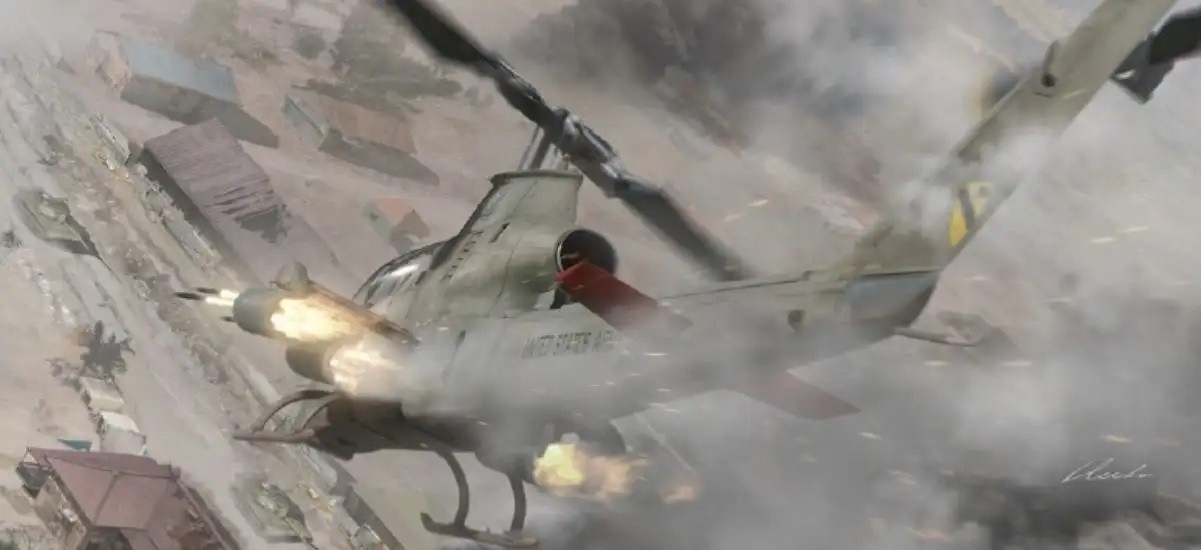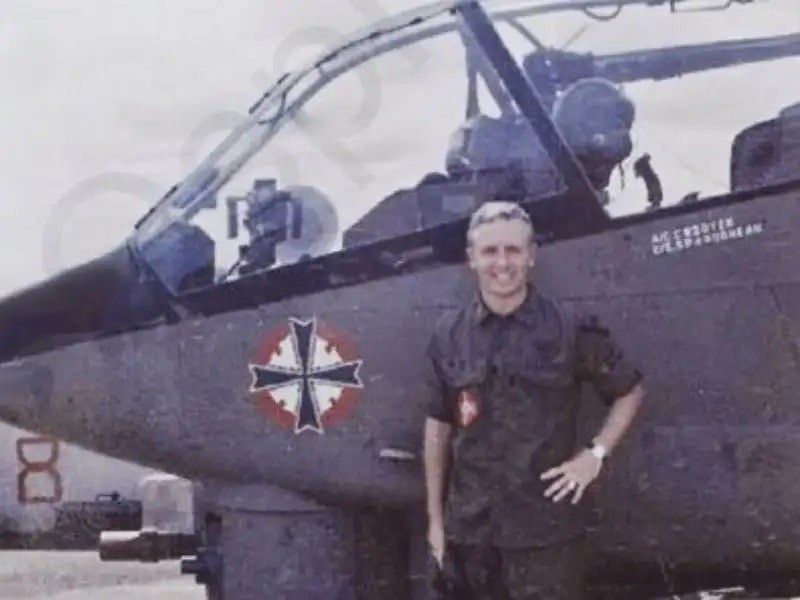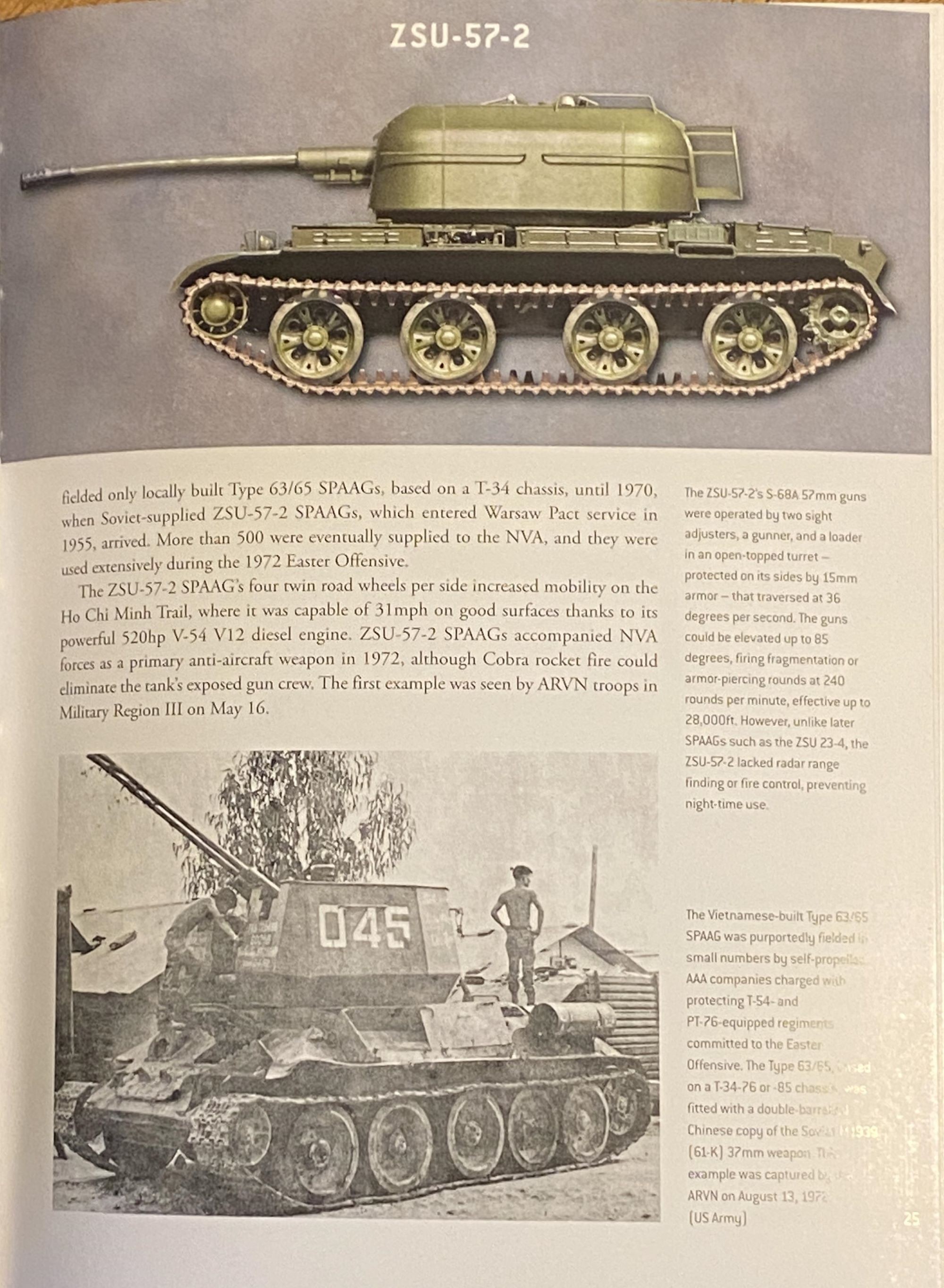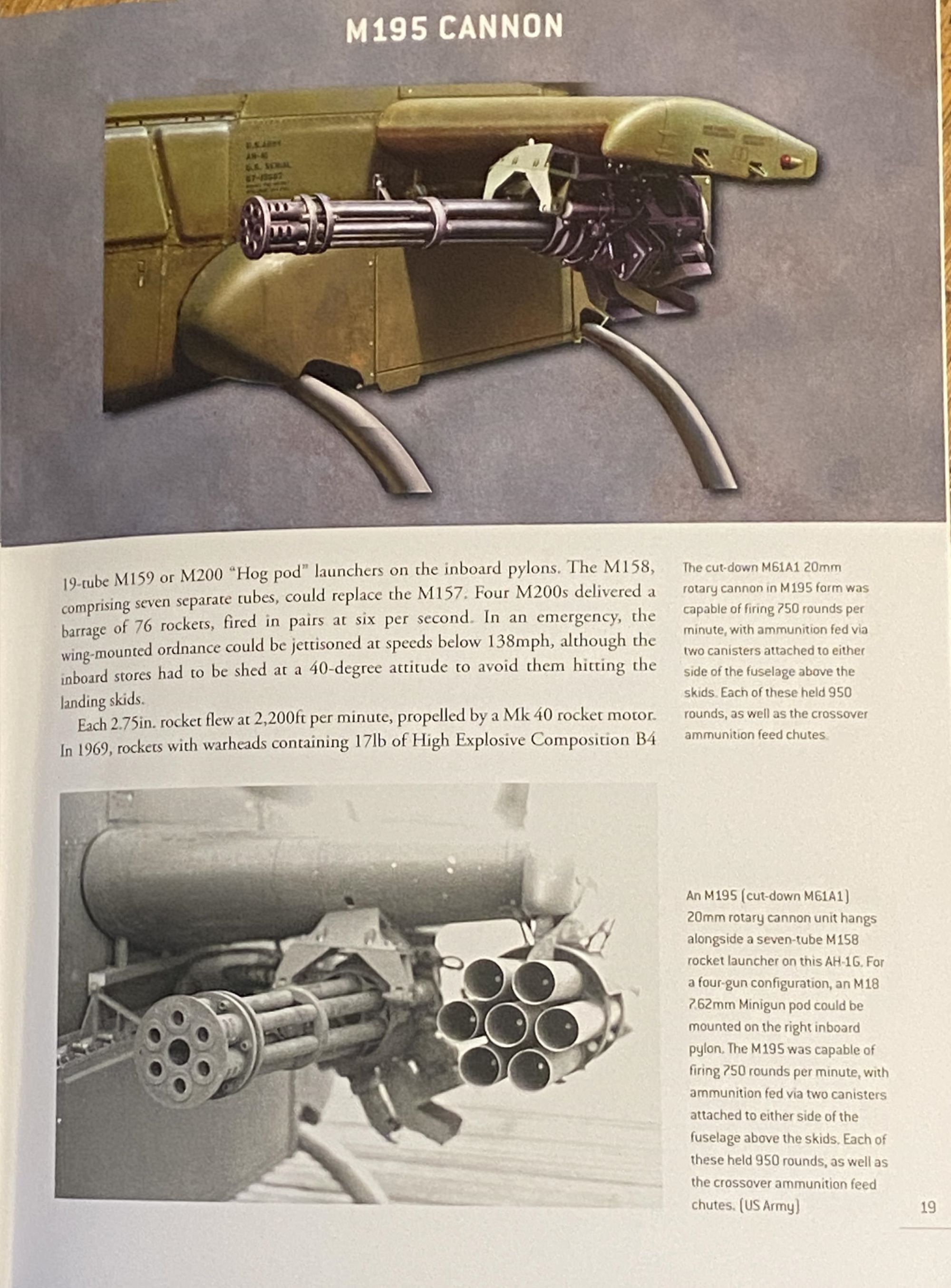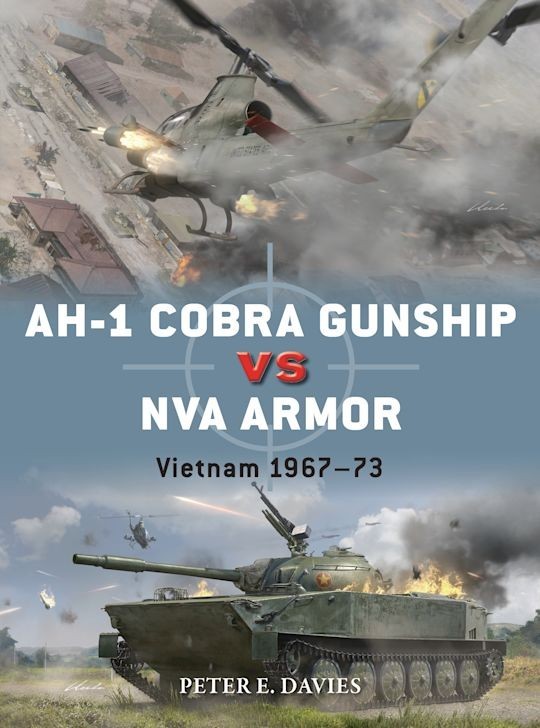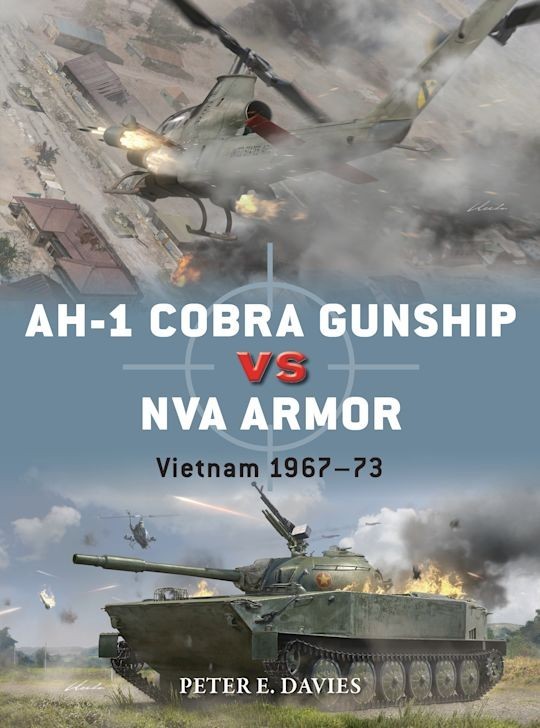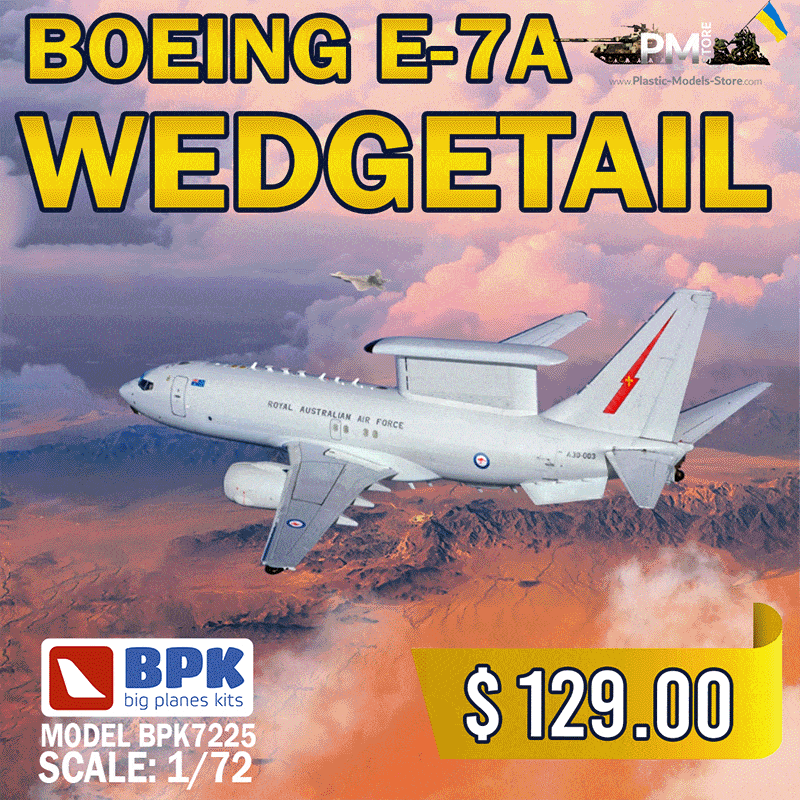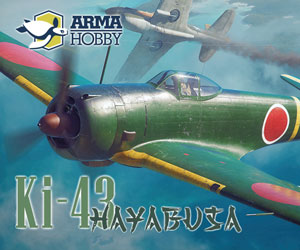Introduction
While the Second Vietnam War from 1965-1975 is often described as a "helicopter war" because of the extensive usage of copters during the conflict, it was equal parts intention and reaction to the situation on the ground. Choppers had first been used during the Korean War, but mostly for medevac purposes. By the early 1960s, however, as US involvement in the Vietnamese civil war began to escalate, the need for mobile forces that could be transported quickly over a countryside with few or poor roads became apparent, and choppers were the logical solution. The problem was that the United States had assumed that helicopters would not be a viable armaments platform against the Soviets.
But several forward-thinking officers like Lt. Gen. Hamilton "Ham" Howze and Col. Jay Vanderpool had come up with the concept of an Air Assault Division in the mid-50s that eventually became the Air Cav in Vietnam. As this concept of air-mobile cavalry took shape, the need for armed protection for the transport aircraft, and to perform ground interdiction became apparent. While fixed-wing aircraft and artillery were traditionally the means for "softening up" points of ingress, the quick action of the air mobile battlefield meant that a new means of delivering weapons on small targets close to friendly troops was needed.
Most of us are aware of the Huey gunships that were developed, but these were in many cases ad hoc creations and field modifications. The Defense Department was looking for a chopper that was fast, maneuverable, and most of all, cheap. The AH-1 Cobra gunship fit the bill as it shared up to 80% of parts with the UH-1 Huey. Unlike other designs, it was fast into the field and cheaper to produce.
In the beginning, the Cobra's role was envisioned as opposing infantry formations, since the the PAVN (People's Army of Vietnam) had kept its tanks and APCs north of the Demilitarized Zone (DMZ) along the 17th Parallel to repel an anticipated US invasion. As such, there were no tank-on-tank battles for much of the war. Partly, too, this was also because the North Vietnamese were not stupid, and realized their armor (mostly Soviet cast-offs like the T-34/85) was no match for America's enormously-powerful air power. But by the late 1960s, Vietnam was acquiring better and more-modern materiel from the Soviet Union and the People's Republic of China, including state-of-the-art vehicles such as the T-54 and PT-76.
By 1970, as the US began to wind down its direct combat involvement in Vietnam in favor of "Vietnamization," the North began to bring its armored forces South, creating a need for fast response that was more versatile than fixed-wing aircraft and artillery. Bell's AH-1 Cobra had speed and maneuverability, yet lacked the ideal weapons that would make it a true tank killer. It became a test bed for a variety of armament configurations ranging from machine guns and mini-guns to rockets. During the Spring of 1972 "Easter Offensive," large numbers of tanks attacked several key cities and strongpoints in South Vietnam, where the Cobras played an important role in throwing back the enemy. When the US eventually ended combat in-theater, the Cobra was withdrawn from Vietnam in 1973.
Osprey Publishing, as part of their popular "X vs Y" series of books, has released AH-1 Cobra Gunship vs NVA Armor: Vietnam 1967-73 that dives into the use of the AH-1 Cobra against the various armored and softskin vehicles of the North Vietnamese Army/PAVN (People's Army of Vietnam). This series of books is popular, both with modelers and armchair historians (sometimes one in the same), often imitating a barroom argument about whether one tank, aircraft or other military entity is superior to its opposite or vice-versa. Many of these titles have been reviewed here on Armorama and its sister sites on the Kitmaker Network, and we are pleased to add this one to the growing list.
Contents
This 80-page softcover book written by Peter D. Davies, a longtime Osprey contributor, and illustrated by Gareth Hector and Jim Laurier, is in Osprey's typical format contains the following sections:
- Introduction
- Chronology (from concept in the early 1950s until the final Cobra units are withdrawn from Vietnam in 1973)
- Design and Development
- Technical Specifications
- The Strategic Situation
- The Combatants
- Combat
- Statistics and Analysis (a good analysis of how the Cobra performed in action)
- Aftermath
- Further Reading
- Index
The Review
The AH-1 Cobra was intended to attack ground targets such as landing zones (LZs) and to interdict Communist forces attacking air cavalry positions. Its design was revolutionary, since it had the gunner in the forward of two tandem seats with a panoramic view of the battlefield through the copter's large Plexiglas windscreen (which the crew hated because it was not bulletproof). But the Army and later the Marines didn't bring the helicopters to Vietnam with an established training regimen, and so air crew has to develop techniques literally on the fly. Author Davies does an admirable job of conveying the "flying by the seat of their pants" that characterized air cav chopper operations during the latter phase of the war.
And just as the Americans were figuring out how best to employ their helicopters, the PAVN or Viet Cong quickly developed methods for combating the choppers. For example, they would set up three DSsKM 1938/46 12.7mm "helicopter killer" heavy machine guns in triangulated positions to gain maximum coverage. Pilots learned quickly not to overfly their targets, or risk taking ground fire. The US began stacking up Cobras above a potential target ready to swoop down on AAA positions that were revealed by low-flying, lightly-armed OH-6A Cayuses sent in as bait. Davies describes the tactics well, and provides illustrations of attack patterns used.
As the North began bringing its armor South, the Americans and ARVN (Army of the Republic of Vietnam) struggled to counter the new, heavier threat. The Cobras were highly-mobile, but lacked a "stand off" weapon like the later-developed Hellfire missile that could be fired from a distance. Instead, using 2.75 inch rockets and mini-guns, the choppers struggled to stop anything bigger than a PT-76, Indeed, most of the tank losses by the NVA were to fixed wing aircraft (jets like the F-4 Phantom) and heavy B-52 Arc Light raids.
Nevertheless, Davies does a good job of capturing the "learn on the fly" efforts of the Cobras and their crews in the battles of An Loc, Loc Ninh and Kontum. The writing is crisp, the detail plentiful without overwhelming the non-specialist, and you really get a sense of the desperate fighting that went on as the North threw their best armored units against the South's defenders.
To illustrate it all, the book contains many clear and detailed photos of Cobras and NVA armor, both working and knocked-out, and brings the reader into the center of the conflict. But it should be stated clearly for modelers that AH-1 Cobra Gunship vs NVA Armor is no substitute for a detailed "Walk Around" or "In Detail" reference work. The book has a wonderful color illustration of the (pilot's) rear cockpit, for example, but isn't chockablock with close-ups showing where kit parts should be placed, or colors for this or that. Nevertheless, it's a fascinating look at a weapons delivery platform in the field, assessing the challenges and success stories. Despite the title, the book focuses on the chopper more and less on the armor or its crews, reflecting something of a cultural bias. Still, its detail and organization make for an enjoyable read.
Conclusion
While the Second Vietnam War was not, for the most part, a conventional conflict between armored units, armor was important to both sides at various stages of the war. As the fighting dragged on and both sides struggled to gain dominance over the other, the North Vietnamese in particular began to make greater use of their armor, requiring a response by US forces. The Cobra gunship helped answwer this challenge, and led in a straight line to today's Apache helicopters which are armed to the teeth, and form a vital component of American tactical combat capabilities.
I greatly enjoyed the book, both for its depth of coverage and its singling out of a particular friction point in what proved to be a long and controversial war. If one includes the French struggle in Indochina, the conflict dragged on for thirty years, and chewed up a bewildering array of men and materiel. Often discussions of vehicles or arms are a ceaseless drone of attempts, successes (e.g., the Huey) and failures (e.g., the M114). It's refreshing to have a book that zooms in on one weapons platform and its engagement the way AH-1 Cobra Gunship vs NVA Armor does.
Thanks to Osprey Publishing for providing this review copy. Please mention you saw this book reviewed on Kitmaker Network when purchasing your own copy.
